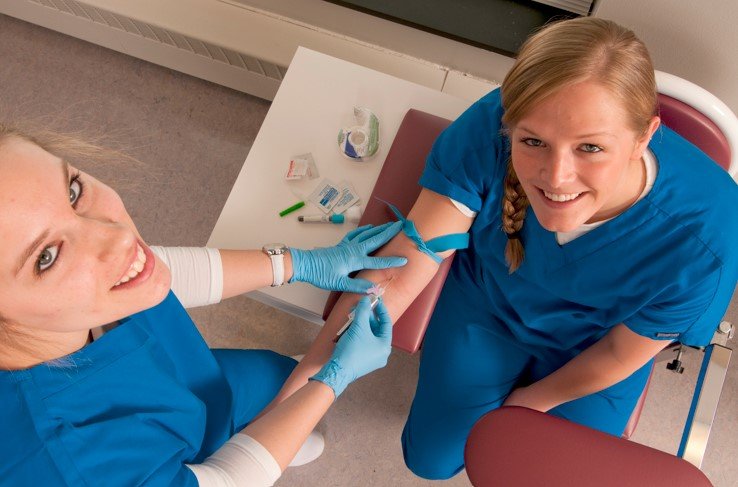Improving Efficiency and Reducing Costs in Hospital Procurement of Telemedicine Equipment
Summary
- Hospitals are turning to telemedicine equipment for laboratory testing to improve efficiency and reduce costs.
- Strategies such as group purchasing organizations, vendor partnerships, and centralized procurement are being implemented to streamline the procurement process.
- Investing in innovative technologies and establishing clear communication channels with suppliers are key factors in successful equipment procurement.
Introduction
In recent years, hospitals in the United States have been increasingly turning to telemedicine equipment for laboratory testing to improve efficiency and reduce costs. With advancements in technology and an ever-growing demand for virtual healthcare services, the need for reliable and cost-effective procurement of telemedicine equipment has become a top priority for hospital supply and equipment management teams.
Challenges in Procurement
Procuring telemedicine equipment for laboratory testing comes with its own set of challenges. These challenges include:
- High upfront costs
- Lack of standardization in equipment
- Limited vendor options
Strategies for Efficient and Cost-Effective Procurement
To address these challenges, hospitals are implementing various strategies to ensure efficient and cost-effective procurement of telemedicine equipment for laboratory testing.
Group Purchasing Organizations
One strategy that hospitals are increasingly utilizing is the use of group purchasing organizations (GPOs). GPOs allow hospitals to leverage the collective buying power of multiple healthcare facilities to negotiate better prices with suppliers. By joining a GPO, hospitals can access discounted rates on telemedicine equipment and streamline the procurement process.
Vendor Partnerships
Another strategy hospitals are implementing is forming strategic partnerships with vendors. By establishing long-term relationships with reliable suppliers, hospitals can ensure a steady supply of telemedicine equipment and negotiate favorable pricing terms. These partnerships also allow hospitals to collaborate with vendors on product development and customization to meet their specific needs.
Centralized Procurement
Centralized procurement is another key strategy hospitals are using to streamline the procurement process. By centralizing their purchasing functions, hospitals can standardize their equipment selection, reduce redundant purchasing practices, and improve efficiency. Centralized procurement also allows hospitals to track spending more effectively and identify cost-saving opportunities.
Investing in Innovative Technologies
Many hospitals are also investing in innovative technologies to optimize their procurement processes. By leveraging digital platforms and automation tools, hospitals can streamline the equipment sourcing, ordering, and payment processes. These technologies help hospitals save time and reduce manual errors, ultimately leading to cost savings and improved efficiency.
Establishing Clear Communication Channels
Clear communication channels with suppliers are essential for successful equipment procurement. Hospitals should maintain open lines of communication with vendors to discuss pricing, delivery schedules, and product specifications. By fostering strong relationships with suppliers, hospitals can ensure timely and cost-effective procurement of telemedicine equipment for laboratory testing.
Conclusion
In conclusion, hospitals in the United States are implementing various strategies to ensure efficient and cost-effective procurement of telemedicine equipment for laboratory testing. By utilizing group purchasing organizations, forming vendor partnerships, centralizing procurement functions, investing in innovative technologies, and establishing clear communication channels with suppliers, hospitals can streamline their procurement processes and reduce costs. These strategies are crucial for hospitals looking to stay competitive in the rapidly evolving healthcare landscape.

Disclaimer: The content provided on this blog is for informational purposes only, reflecting the personal opinions and insights of the author(s) on the topics. The information provided should not be used for diagnosing or treating a health problem or disease, and those seeking personal medical advice should consult with a licensed physician. Always seek the advice of your doctor or other qualified health provider regarding a medical condition. Never disregard professional medical advice or delay in seeking it because of something you have read on this website. If you think you may have a medical emergency, call 911 or go to the nearest emergency room immediately. No physician-patient relationship is created by this web site or its use. No contributors to this web site make any representations, express or implied, with respect to the information provided herein or to its use. While we strive to share accurate and up-to-date information, we cannot guarantee the completeness, reliability, or accuracy of the content. The blog may also include links to external websites and resources for the convenience of our readers. Please note that linking to other sites does not imply endorsement of their content, practices, or services by us. Readers should use their discretion and judgment while exploring any external links and resources mentioned on this blog.

